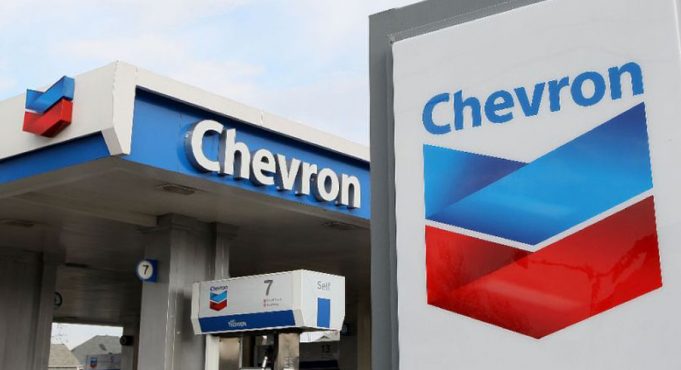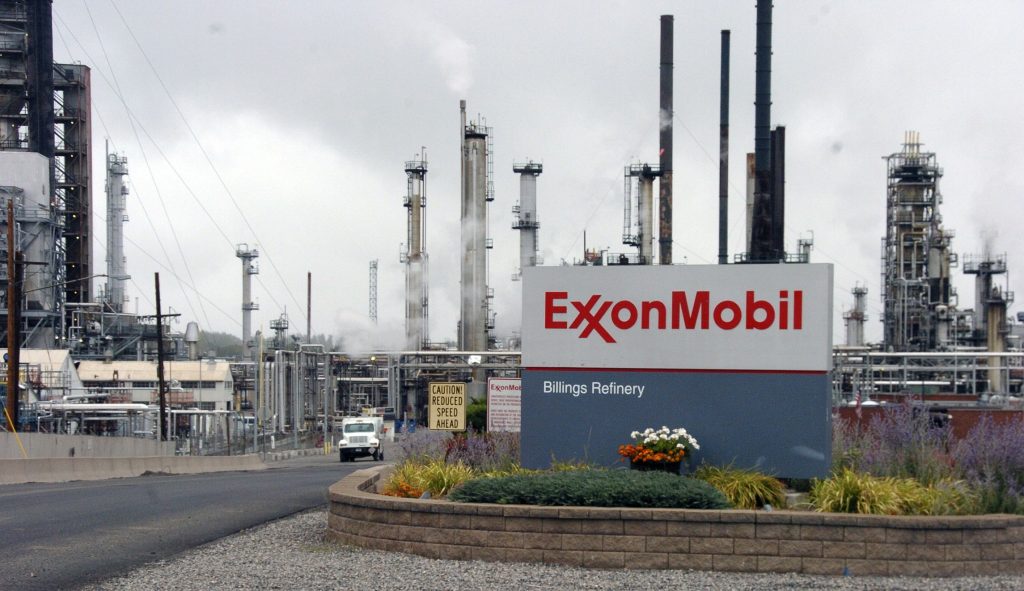This report provides the last five years revenues and revenue growth of Chevron Corp (CVX) from 2012 to 2016. Chevron generated a total of $114.5 billion revenues during 2016. Chevron reported a revenue growth of -17.3% year-over-year during 2016. The revenues and the revenue growth correspond to the fiscal year ending in December.

CHEVRON REVENUES FROM 2012 TO 2016
Here are the revenues and the revenue growth details of Chevron during the last five years:
- Chevron generated a total of $241.9 billion revenues during 2012. Chevron reported a revenue growth of -4.6% year-over-year during 2012.
- Chevron generated a total of $228.8 billion revenues during 2013. Chevron reported a revenue growth of -5.4% year-over-year during 2013.
- Chevron generated a total of $212 billion revenues during 2014. Chevron reported a revenue growth of -7.4% year-over-year during 2014.
- Chevron generated a total of $138.5 billion revenues during 2015. Chevron reported a revenue growth of -34.7% year-over-year during 2015.
- Chevron generated a total of $114.5 billion revenues during 2016. Chevron reported a revenue growth of -17.3% year-over-year during 2016.
WHY ANALYZE REVENUE GROWTH?
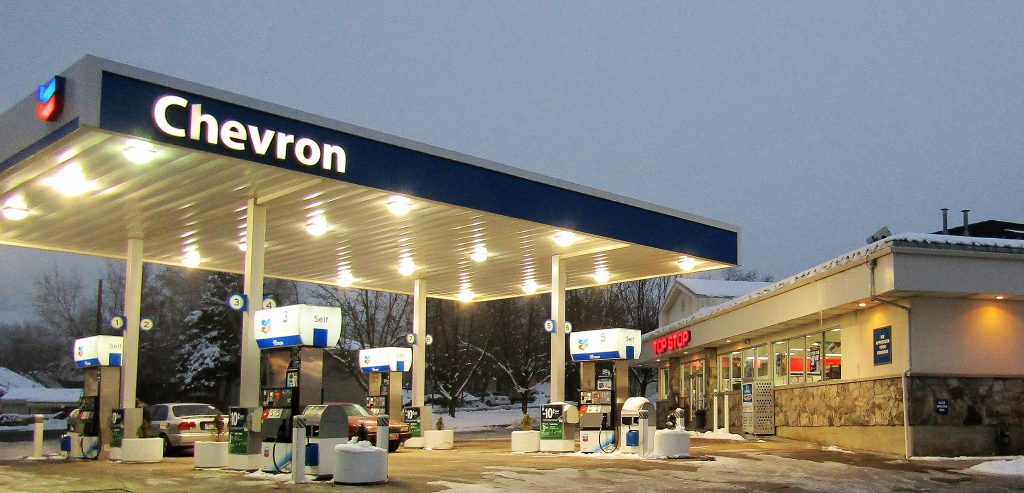
Revenue growth is the most commonly analyzed financial metric. Revenue Growth is the percent increase (or decrease) of a company’s revenue between two time periods. It is computed by using the following formula: ((revenues during the time period two – revenues during the time period one) / revenues during the time period one)*100. If the time periods are two consecutive years, then the revenue growth is referred to as the annual revenue growth year-over-year. If the time periods are two consecutive quarters, then the revenue growth is referred to as the quarterly revenue growth quarter-over-quarter. If the time periods refer to the same quarter in the two consecutive years, then the revenue growth is referred to as quarterly revenue growth year-over-year. In case the time periods are two non-consecutive years, then the revenue CAGR (Commutative Annual Growth Rate) is computed.
Revenue growth analysis is important for a number of reasons. First, it helps in understanding how a business is performing. If the revenue growth rates are positive, it means the business is performing well and the revenues are increasing. If the revenue growth rates are negative, it means the revenues are declining and the company needs to take measures to increase them. If they don’t, the company will continue to shrink. Second, a company’s historical revenue growth analysis along with the market size and market share analysis helps in forecasting the future revenues of a company. Third, a comparison of a company’s growth rates with its competitors helps in determining who is winning more business. A revenue growth higher than the industry average translates into increasing market share. Companies with very high revenue growth rates have the potential to be the industry disrupters.
CHEVRON RANKING
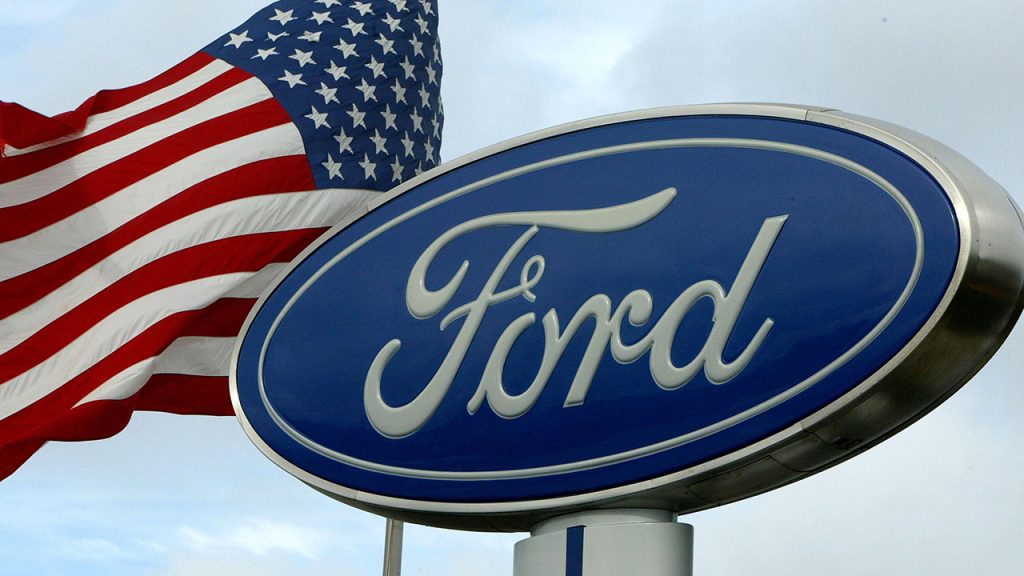
The top-20 companies in the US by revenues during 2016 were:
- Walmart ($482.1 billion)
- ExxonMobil ($226.1 billion)
- Berkshire Hathaway ($223.6 billion)
- Apple ($215.6 billion)
- McKesson ($190.9 billion)
- UnitedHealth Group ($184.8 billion)
- CVS Health ($177.5 billion)
- General Motors ($166.4 billion)
- AT&T; ($163.8 billion)
- Ford Motor ($151.8 billion)
- AmerisourceBergen ($146.8 billion)
- Amazon ($136 billion)
- Verizon ($126 billion)
- General Electric ($123.7 billion)
- Cardinal Health ($121.5 billion)
- Costco ($118.7 billion)
- Walgreens Boots Alliance ($117.4 billion)
- Chevron ($114.5 billion)
- Kroger ($109.8 billion)
- Express Scripts Holding ($100.3 billion)
For the purpose of performance benchmarking of a company with a sector or industry average, R&P; Research associates every company with one sector and one industry. An industry consists of companies with related/similar business models. A sector comprises of a group of related/similar industries. For example, Life Sciences sector is comprised of following industries: Pharmaceuticals; Medical Devices; Biotechnology; Diagnostics & Scientific Instruments.
Chevron is associated with Oil & Gas Sector and Oil & Gas Production Industry.
With $114.5 billion revenues, Chevron ranked number 2 of all the companies in the US Oil & Gas sector. There were a total of 230 public companies in the US Oil & Gas sector that had revenues greater than $50 million during 2016.

The top-10 companies in the US Oil & Gas sector by revenues during 2016 were:
- ExxonMobil ($226.1 billion)
- Chevron ($114.5 billion)
- Phillips 66 ($85.8 billion)
- Valero Energy ($75.7 billion)
- Marathon Petroleum ($63.4 billion)
- Energy Transfer Equity ($37.5 billion)
- Schlumberger ($27.8 billion)
- Imperial Oil ($27.4 billion)
- World Fuel ($27 billion)
- Tesoro ($24.6 billion)
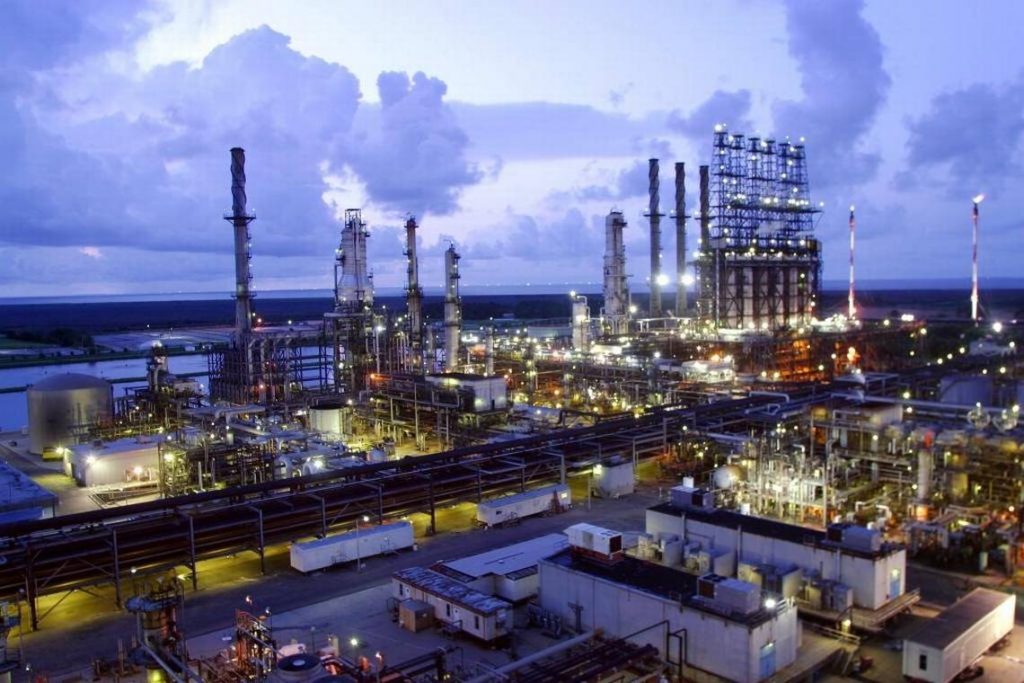
Oil & Gas sector is comprised of the following industries: Oil & Gas Production; Oil & Gas Distribution; Oil & Gas Equipment and Services; Alternative Energy. The definitions for each of the industries is as follows:
- Oil & Gas Production industry includes companies primarily engaged in operating oil & gas properties. Key activities may include exploration for crude petroleum and natural gas; drilling, completing, and equipping wells; and all other activities in the preparation of oil and gas up to the point of shipment from the producing property. It also includes companies engaged in crude petroleum refining and producing gasoline, kerosene, distillate fuel oils, residual fuel oils, and lubricants, through fractionation or straight distillation of crude oil.
- Oil & Gas Distribution industry includes companies primarily engaged in the pipeline transportation of petroleum, natural gas, and other commodities. It also includes companies primarily engaged in the wholesale and retail distribution of petroleum and petroleum products.
- Oil & Gas Equipment and Services industry includes companies primarily engaged in drilling wells for oil or gas field operations for others on a contract or fee basis. It also includes companies providing exploration services and machinery & equipment for oil and gas field operations.
- Alternative Energy industry includes companies that develop or manufacture renewable energy equipment utilizing sources such as solar, wind, geothermal, hydro, and waves. It also includes companies that produce alternative fuels such as methanol, ethanol, hydrogen and biofuels that are mainly used to power vehicles.
With $114.5 billion revenues, Chevron ranked number 2 of all the companies in the US Oil & Gas Production industry. There were a total of 89 public companies in the US Oil & Gas Production industry that had revenues greater than $50 million during 2016.
The top-10 companies in the US Oil & Gas Production industry by revenues during 2016 were:
- ExxonMobil ($226.1 billion)
- Chevron ($114.5 billion)
- Phillips 66 ($85.8 billion)
- Valero Energy ($75.7 billion)
- Marathon Petroleum ($63.4 billion)
- Imperial Oil ($27.4 billion)
- Tesoro ($24.6 billion)
- ConocoPhillips ($24.4 billion)
- PBF Energy ($15.9 billion)
- Devon Energy ($12.2 billion)
COMPANIES SEGMENTATION
To identify and analyze high/low growth or most/least profitable similar-size companies in different sectors or industries, R&P; research classifies all companies into different segments based upon their revenues, revenue growth, and net profit margins.
Based upon their annual revenues, the companies are classified into one of the following four segments:
- Mega companies, having revenues greater than $50 billion.
- Very Large companies, having revenues between $10 billion and $50 billion.
- Large companies, having revenues between $1 billion and $10 billion.
- Mid-size companies, having revenues between $50 million and $1 billion.
With $114.5 billion revenues, Chevron was in the Mega companies revenue segment during 2016. There were a total of 54 companies in the Mega companies revenue segment during 2016.
Based upon their annual revenue growth, the companies are classified into one of the following eight segments:
- Very High positive growth companies, having annual revenue growth greater than 50%.
- High positive growth companies, having annual revenue growth between 20% and 50%.
- Medium positive growth companies, having annual revenue growth between 5% and 20%.
- Low positive growth companies, having annual revenue growth between 0% and 5%.
- Low negative growth companies, having annual revenue growth between -5% and 0%.
- Medium negative growth companies, having annual revenue growth between -20% and -5%.
- High negative growth companies, having annual revenue growth between -50% and -20%.
- Very High negative growth companies, having annual revenue growth less than -50%.
With -17.3% revenue growth year-over-year, Chevron was in the Medium negative revenue growth segment during 2016. There were a total of 448 companies in the Medium negative revenue growth segment during 2016. Of the US top-3000 companies, 1985 (nearly two-third of the total) had positive revenue growth and 1015 (nearly one-third of the total) had negative revenue growth during 2016.
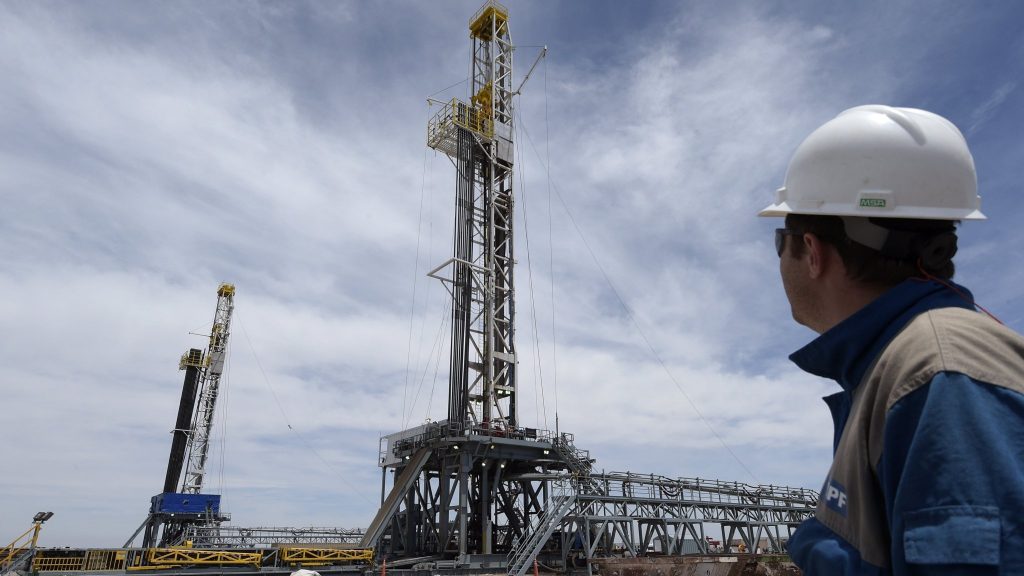
Based upon their annual net profit margin, the companies are classified into one of the following eight segments:
- Very High positive margin companies, having net profit margin greater than 50%.
- High positive margin companies, having net profit margin between 20% and 50%.
- Medium positive margin companies, having net profit margin between 5% and 20%.
- Low positive margin companies, having net profit margin between 0% and 5%.
- Low negative margin companies, having net profit margin between -5% and 0%.
- Medium negative margin companies, having net profit margin between -20% and -5%.
- High negative margin companies, having net profit margin between -50% and -20%.
- Very High negative margin companies, having net profit margin less than -50%.
With a net margin of -0.4%, Chevron was in the Low negative net profit margin segment during 2016. There were a total of 249 companies in the Low negative net profit margin segment during 2016. Of the US top-3000 companies, 2244 (nearly three-fourth of the total) had positive net profit margin and 756 (nearly one-fourth of the total) had negative net profit margin during 2016.
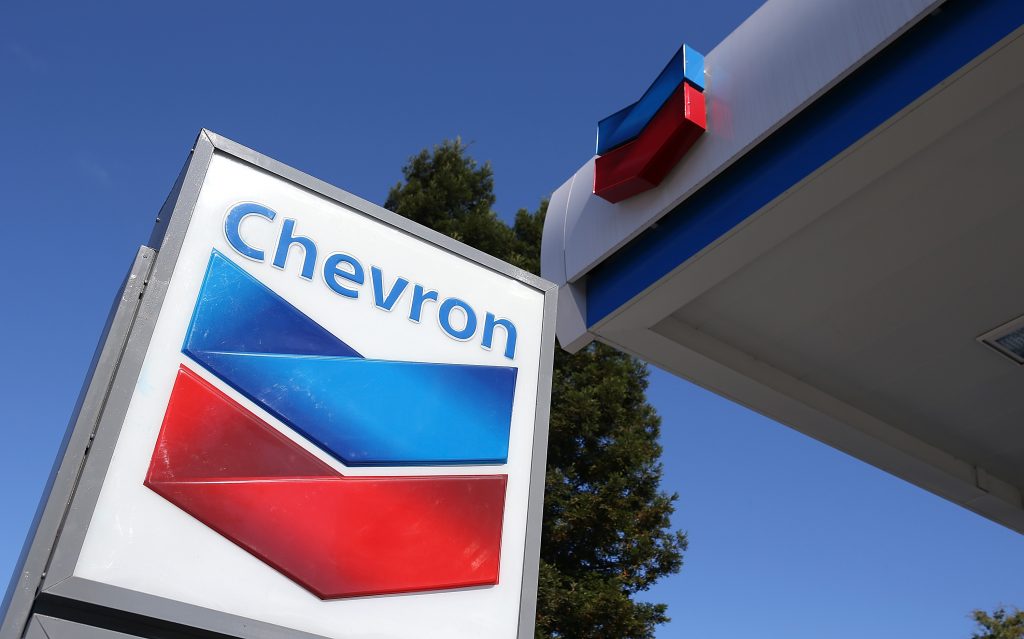
COMPANY BUSINESS SUMMARY
Chevron Corporation, through its subsidiaries, engages in integrated energy, chemicals, and petroleum operations worldwide. The company operates in two segments, Upstream and Downstream. The Upstream segment is involved in the exploration, development, and production of crude oil and natural gas; processing, liquefaction, transportation, and regasification associated with liquefied natural gas; transportation of crude oil through pipelines; and transportation, storage, and marketing of natural gas, as well as operates a gas-to-liquids plant. The Downstream segment engages in refining crude oil into petroleum products; marketing crude oil and refined products; transporting crude oil and refined products through pipeline, marine vessel, motor equipment, and rail car; and manufacturing and marketing commodity petrochemicals, and fuel and lubricant additives, as well as plastics for industrial uses. It is also involved in the cash management and debt financing activities; insurance operations; real estate activities; and technology businesses. Further, the company holds interests in power plants, as well as operates geothermal plants; and engages in the transportation of refined products primarily in the coastal waters of the United States. The company was formerly known as Chevron Texaco Corporation and changed its name to Chevron Corporation in 2005. Chevron Corporation was founded in 1879 and is headquartered in San Ramon, California.
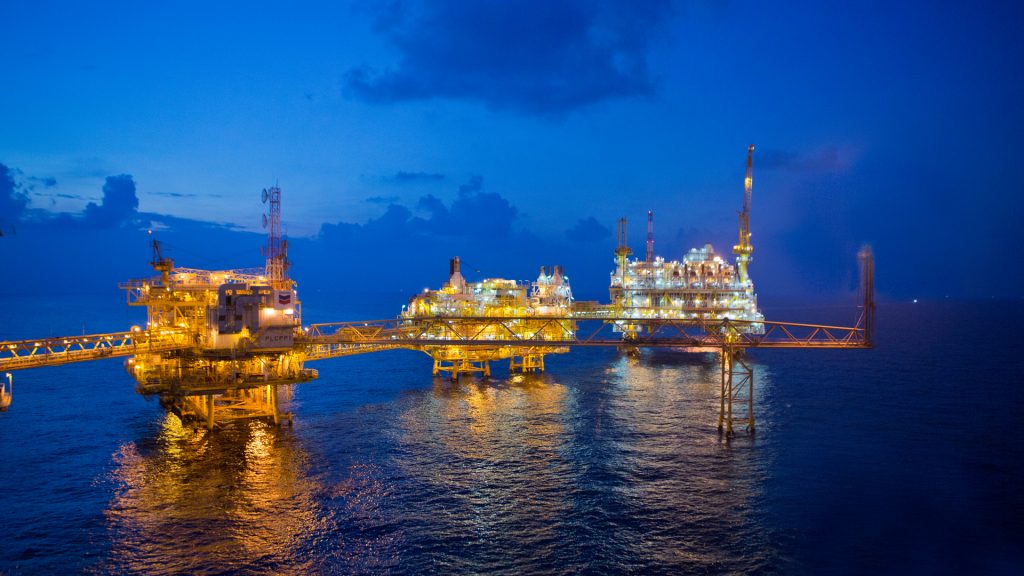
INDUSTRY PEERS AND COMPETITORS OF CHEVRON
ExxonMobil (XOM) Business Analysis – Analyze Historical Performance, Strategic Priorities, And…
Exxon Mobil Corp with $226 billion revenues in the year 2016 was the number 1 Oil & Gas Production company. Read this report to know the top competitors of ExxonMobil and identify growth and cost optimization opportunities of ExxonMobil
 Phillips 66 (PSX) Business Analysis – Analyze Historical Performance, Strategic Priorities,…
Phillips 66 (PSX) Business Analysis – Analyze Historical Performance, Strategic Priorities,…
Phillips 66 with $86 billion revenues in the year 2016 was the number 3 Oil & Gas Production company. Read this report to know the top competitors of Phillips 66 and identify growth and cost optimization opportunities of Phillips 66
 Valero Energy (VLO) Business Analysis – Analyze Historical Performance, Strategic Priorities,…
Valero Energy (VLO) Business Analysis – Analyze Historical Performance, Strategic Priorities,…
Valero Energy Corp with $76 billion revenues in the year 2016 was the number 4 Oil & Gas Production company. Read this report to know the top competitors of Valero Energy and identify growth and cost optimization opportunities of Valero Energy

Marathon Petroleum (MPC) Business Analysis – Analyze Historical Performance, Strategic Priorities,…
Marathon Petroleum Corp with $63 billion revenues in the year 2016 was the number 5 Oil & Gas Production company. Read this report to know the top competitors of Marathon Petroleum and identify growth and cost optimization opportunities of Marathon Petroleum
Imperial Oil (IMO) Business Analysis – Analyze Historical Performance, Strategic Priorities,…
Imperial Oil Ltd with $27 billion revenues in the year 2016 was the number 6 Oil & Gas Production company. Read this report to know the top competitors of Imperial Oil and identify growth and cost optimization opportunities of Imperial Oil

Tesoro (TSO) Business Analysis – Analyze Historical Performance, Strategic Priorities, And…
Tesoro Corp with $25 billion revenues in the year 2016 was the number 7 Oil & Gas Production company. Read this report to know the top competitors of Tesoro and identify growth and cost optimization opportunities of Tesoro
REVENUES ANALYSIS
 Chevron (CVX) Revenues And Revenue Growth From 2012 To 2016
Chevron (CVX) Revenues And Revenue Growth From 2012 To 2016
This report provides the last five years revenues and revenue growth of Chevron Corp (CVX) from 2012 to 2016. Chevron generated a total of $114.5 billion revenues during 2016. Chevron reported a revenue growth of -17.3% year-over-year during 2016. The revenues and the revenue growth correspond to the fiscal year ending in December.
 Chevron (CVX) Revenues And Revenue Growth From 2002 To 2016
Chevron (CVX) Revenues And Revenue Growth From 2002 To 2016
This report provides the last fifteen years revenues and revenue growth of Chevron Corp (CVX) from 2002 to 2016. Chevron generated a total of $114.5 billion revenues during 2016. Chevron reported a revenue growth of -17.3% year-over-year during 2016. The revenues and the revenue growth correspond to the fiscal year ending in December.
Chevron (CVX) Revenue Growth Comparison With Industry Growth From 2012 To…
This report provides a comparison of Chevron Corp (CVX) revenue growth with Oil & Gas Production industry growth during the last five years from 2012 to 2016. Chevron reported a revenue growth of -17.3% year-over-year during 2016. The Oil & Gas Production industry growth was -15.5% year-over-year during 2016. Chevron growth was slower than the industry during 2016.
PROFIT ANALYSIS
 Chevron (CVX) Net Profit And Net Margin From 2012 To 2016
Chevron (CVX) Net Profit And Net Margin From 2012 To 2016
This report provides the last five years net profit and net margin of Chevron Corp (CVX) from 2012 to 2016. Chevron reported a total net income of -$497 million during 2016. Chevron generated a total of $114.5 billion revenues during 2016. Chevron net profit margin was -0.4% during 2016. The net profit and the net profit margin correspond to the fiscal year ending in December.
Chevron (CVX) Net Profit And Net Margin From 2002 To 2016
This report provides the last fifteen years net profit and net margin of Chevron Corp (CVX) from 2002 to 2016. Chevron reported a total net income of -$497 million during 2016. Chevron generated a total of $114.5 billion revenues during 2016. Chevron net profit margin was -0.4% during 2016. The net profit and the net profit margin correspond to the fiscal year ending in December.
 Chevron (CVX) Net Profit Margin Comparison With Industry From 2012 To…
Chevron (CVX) Net Profit Margin Comparison With Industry From 2012 To…
This report provides a comparison of Chevron Corp (CVX) net profit margin with Oil & Gas Production industry net profit margin during the last five years from 2012 to 2016. Chevron reported a net profit margin of -0.4% during 2016. The Oil & Gas Production industry net profit margin was -4.2% during 2016. Chevron was more profitable than the industry during 2016.
COST EXPENSES ANALYSIS
Chevron (CVX) Cost of Sales (COGS) Analysis From 2012 To 2016
This report provides the last five years cost of sales (COGS) analysis of Chevron Corp (CVX) from 2012 to 2016. Chevron spent a total of $91.3 billion on COGS during 2016. Chevron generated a total of $114.5 billion revenues during 2016. As a percentage of revenues, Chevron spent 79.7% of its total revenues on COGS during 2016. The cost of sales (COGS) numbers are for the fiscal year ending in December.
 Chevron (CVX) Research & Development (R&D) Spending Analysis From 2012 To…
Chevron (CVX) Research & Development (R&D) Spending Analysis From 2012 To…
This report provides the last five years research and development (R&D;) expenses of Chevron Corp (CVX) from 2012 to 2016. Chevron spent a total of $1 billion on research and development (R&D;) activities during 2016. Chevron generated a total of $114.5 billion revenues during 2016. As a percentage of revenues, Chevron spent 0.9% of its total revenues on R&D; activities during 2016. The R&D; spending numbers are for the fiscal year ending in December.
 Chevron (CVX) Sales, Marketing, General & Administrative (SG&A) Spending Analysis From…
Chevron (CVX) Sales, Marketing, General & Administrative (SG&A) Spending Analysis From…
This report provides the last five years sales, marketing, general & administrative (SG&A;) expenses of Chevron Corp (CVX) from 2012 to 2016. Chevron spent a total of $4.7 billion on sales, marketing, general, and administrative (SG&A;) activities during 2016. Chevron generated a total of $114.5 billion revenues during 2016. As a percentage of revenues, Chevron spent 4.1% of its total revenues on SG&A; activities during 2016. The SG&A; spending numbers are for the fiscal year ending in December.
WORKING CAPITAL ANALYSIS
 Chevron (CVX) Inventory Spending Analysis From 2012 To 2016
Chevron (CVX) Inventory Spending Analysis From 2012 To 2016
This report provides the last five years inventory spending analysis of Chevron Corp (CVX) from 2012 to 2016. Chevron invested a total of $5.4 billion on inventories during 2016. Chevron generated a total of $114.5 billion revenues during 2016. As a percentage of revenues, Chevron invested 4.7% of its total revenues on inventories during 2016. The inventory numbers are for the fiscal year ending in December.
 Chevron (CVX) Accounts Receivable (A/R) Analysis From 2012 To 2016
Chevron (CVX) Accounts Receivable (A/R) Analysis From 2012 To 2016
This report provides the last five years Accounts Receivable (A/R) analysis of Chevron Corp (CVX) from 2012 to 2016. Chevron invested a total of $16.6 billion on accounts receivable during 2016. Chevron generated a total of $114.5 billion revenues during 2016. As a percentage of revenues, Chevron invested 14.5% of its total revenues on accounts receivable during 2016. The accounts receivable numbers are for the fiscal year ending in December.
 Chevron (CVX) Accounts Payable (A/P) Analysis From 2012 To 2016
Chevron (CVX) Accounts Payable (A/P) Analysis From 2012 To 2016
This report provides the last five years Accounts Payable (A/P) analysis of Chevron Corp (CVX) from 2012 to 2016. Chevron invested a total of $14 billion on accounts payable during 2016. Chevron generated a total of $114.5 billion revenues during 2016. As a percentage of revenues, Chevron invested 12.2% of its total revenues on accounts payable activities during 2016. The accounts payable numbers are for the fiscal year ending in December.
ASSET MANAGEMENT ANALYSIS
 Chevron (CVX) Property, Plant & Equipment (PP&E) Investment Analysis From 2012…
Chevron (CVX) Property, Plant & Equipment (PP&E) Investment Analysis From 2012…
This report provides the last five years property, plant & equipment (PP&E;) investment analysis of Chevron Corp (CVX) from 2012 to 2016. Chevron invested a total of $182.2 billion on property, plant & equipment (PP&E;) activities during 2016. Chevron generated a total of $114.5 billion revenues during 2016. As a percentage of revenues, Chevron invested 159.2% of its total revenues on PP&E; activities during 2016. The PP&E; investment numbers are for the fiscal year ending in December.
Chevron (CVX) Intangible Assets Analysis From 2012 To 2016
This report provides the last five years Intangible assets analysis of Chevron Corp (CVX) from 2012 to 2016. Chevron invested a total of $4.6 billion on Intangible assets during 2016. Chevron generated a total of $114.5 billion revenues during 2016. As a percentage of revenues, Chevron invested 4% of its total revenues on intangible assets during 2016. The Intangible asset numbers are for the fiscal year ending in December.

